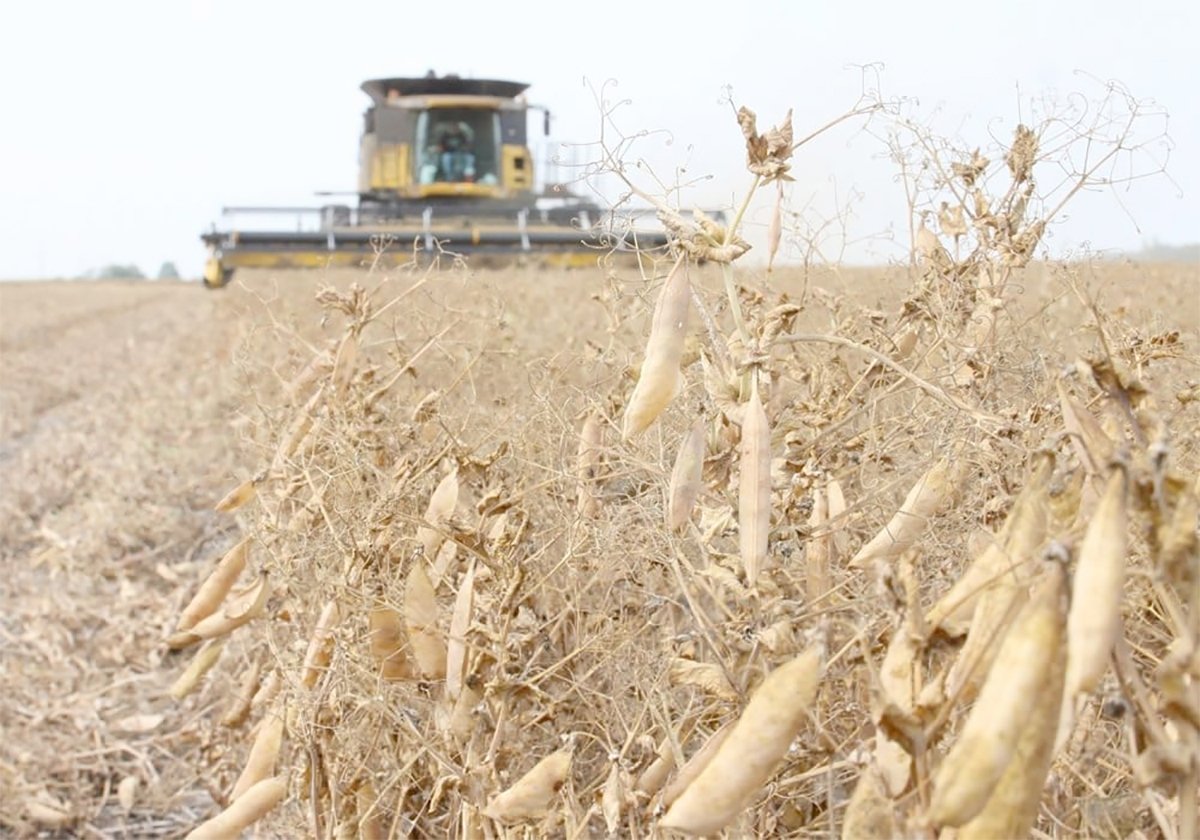Canada’s so-called dysfunctional grain handling and transportation system has functioned well this crop year.
Critics of the system often describe it as inefficient and ineffective in moving grain from farm to foreign customers.
But with just a couple of weeks left in the 1999-2000 crop year, the numbers suggest other-wise.
Exports of grains, oil-seeds and special crops from Western Canada will be around 28 million tonnes, well ahead of last year’s 23.8 million tonnes and slightly above the previous five-year average.
Farmers delivered about three million tonnes more grain this year, and shipments from country elevators are up about 2.3 million tonnes.
Read Also

Chinese, Indian tariffs take toll on pea prices
The disruption of pea exports from Canada’s largest customers will likely result in slow pea exports for the remainder of the crop year.
The Canadian Wheat Board is projecting it will earn around $6 million in net despatch, a premium paid for prompt loading of export vessels.
“We’ve been very pleased this year, as we have the last couple of years,” said Adrian Measner, the board’s executive vice-president of marketing.
The board had shipped 80 percent of its export program by the end of May and will have no trouble achieving its target for the year of 19 million tonnes.
“The system has been working well on an operational level, despite the political debate,” said Measner.
Terry Boehm, transportation spokes-person for the National Farmers Union, said the railways and some farm groups exaggerate the problems in the system for their own purposes.
“A lot of people say it’s complex and dysfunctional and unmanageable, but on the whole we believe it functions reasonably well,” he said.
However, not everyone in the industry was as impressed by the numbers, saying that with relatively small crops and reduced export programs, the system hasn’t been tested in several years.
“We have a system with excess capacity across the board,” said Gordon Cummings, chief executive officer of Agricore. “Have we seen it really pushed with a 30-million tonnes export year? Not for quite a while.”
Jim Feeny of CN Rail described 1999-2000 as a “very good year” for grain movement, noting the railway exceeded its rail car unload targets at all export positions.
But that doesn’t mean the railway is backing off its criticisms.
“It’s a dysfunctional system that can work when things go smoothly,” said Feeny. “But when we’re hit with challenges … things can fall apart pretty quickly.”
Good winter weather and reduced export programs have helped in the last couple of years, he added, but the biggest single reason things have gone well is the trend toward more high throughput elevators that can quickly load large unit trains.
Ted Menzies, president of the Western Canadian Wheat Growers Association, said while it’s nice to see grain moving trouble-free, the real issue is how much it cost farmers to move it.
“That’s still our fundamental concern,” he said. “At what cost is the system working?”
He’s also worried about how well the system will perform in the coming year. The crop could be bigger, there are bound to be serious growing pains with the new rules going into effect Aug. 1, and he fears railway service could be cut back because of the revenue cap.
Boehm thinks it will soon become clear that one of the key components in a smoothly functioning system in recent years has been the centralized planning and co-ordination through the soon-to-be defunct Car Allocation Policy Group.
“In the new system the only way to ration transportation will be through price, not through co-operation and negotiation,” he said, and that will hit farmers in the wallet.














